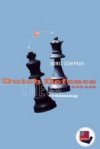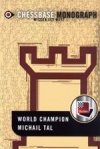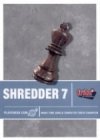 |
ChessBase Reviews |
Last updated 22nd January 2003

| index |
CDs, DVDs, Software Part 11

Dutch Defence A90-A99 by Boris Schipkov
Players choosing the Dutch Defence as Black are generally signalling that they are willing to play for the full point. Limited theoretical knowledge will serve players quite well here, for a change although correspondence players will obviously do some deeper research. What both parties do have to know in the Dutch Defence, however, is a couple of good ideas and manoeuvres – then a successful opening is guaranteed.
On his new CD Boris Schipkov deals with the variations in which Black plays e6, mainly the Stonewall (with d5) and the Iljin-Schenewski Variation (with d6 and eventually e5).
The author follows the now-standard pattern for ChessBase opening training CDs: and emphasizes ideas rather than relying on the reader having to memorise lots of variations. In fact, a whole chapter of this CD is devoted to basic strategic ideas. In this chapter, the author provides several standard strategic themes accompanied by one or more annotated key sample games to illustrate the themes in action.
The database on the CD contains about 14,000 games, 300 of which annotated. 17 database texts feature introductions to the variations, 57 sample games have been annotated by the author. A training database includes 20 games with 70 training tasks to check your freshly acquired knowledge and a huge CTG tree of variations.
All in all I would say this is a useful CD for those wanting a solid introduction to the Dutch Defence. Once again I found games from our members on this CD. Here's one played by Douglas Finnie:
J Clarke - D Finnie [A90] ENG-ch corr, 1992
1.c4 f5 2.g3 Nf6 3.Bg2 e6 4.d4 c6 5.Nf3 d5 6.0–0 Bd6 7.Bf4 Bxf4 8.gxf4 0–0
9.e3 Bd7 10.Qb3 Qb6 11.Nc3 Be8 12.Qc2 Nbd7 13.cxd5 cxd5 14.Na4 Qd8 15.Rfc1 Bh5
16.Ng5 Qe7 17.Qb3 h6 18.Nh3 b6 19.Qb5 Rfc8 20.Qd3 Nf8 21.f3 Ng6 22.Kf2 Nh4
23.Rc2 Qe8 24.Nc3 Nxg2 25.Kxg2 Bxf3+ 26.Kxf3 Qh5+ 27.Kg2 Qg4+ 28.Kh1 Qxh3
29.Rg2 Ng4 30.Re1 Rc7 31.Qe2 Rac8 32.e4 dxe4 33.Nxe4 Rc2 34.Nd2 R8c6 35.d5
exd5 36.Kg1 Kh7 0–1

Fritz Endgame Training Pawn Endings by ChessBase
Who doesn't know it, the painful experience of losing a beautiful game finally due to a lack of endgame technique? More than often, this happens because your training is one-sided, focusing only on opening or tactics. Yet endgames, particularly pawn endgames, are full of fascinating facets. So, enough reasons to tackle the classical subject of endgame training in a modern and effective way.
The Fritz Endgame Trainer shows the fascination of pawn endings in a practical way, making you ready for practice. In more than 100 training positions, you can try to win or draw endgames against Fritz. In view of its well-known endgame strength, this is clearly a most difficult task.
To make you up for it, the experienced author and chess trainer Martin Weteschnik has systematically split up the training positions into 6 chapters with extensive explanations and so-called workshops, i.e. commented videos explaining the proceedings on the screen. The range of tasks is immense, reaching from elementary endgames to examples from the practice of the world champions. If you have solved even the sophisticated tasks, you can choose from the 50 studies from a second database to play them against Fritz.
The Fritz Endgame Trainer is suitable for Fritz-friends who want to learn the basics of pawn endgames through playing as well as for strong club players who want to check their technical skills against Fritz and broaden their horizons.

World Champion Mikhail Tal by Johannes Sondermann
The meteoric tempo the young Tal took the world top by storm with at the end of the 50’s and seized the world champion’s title from Botvinnik in 1960, is already sufficient to grant him a special place in the world of chess. But more than this, it was the art of his attacking play which conquered the hearts of the chess fans all over the world. Despite his short reign on the throne, Tal thus already became a legend during his lifetime. Johannes Sondermann, author of the biographic part of the CD, has made an objective portrait of the world champion's character. During his extensive research, he also interviewed Tal's widow and so reveals a lot about the private Tal as well.

Shredder 7 by ChessBase
For computer experts Shredder is the number one choice. Nobody can ignore its amazing four computer championship titles, won at Jakarta 1996, Paderborn 1999, London 2000 and Maastricht 2001. So in this box you have the reigning blitz world champion, ready to play and analyse with you. The world champion chess program Shredder 7 for a single and multi-processor systems. You can configure the "engine" the module that calculates chess move – and change the program parameters to actually improve its performance in practical games.
After tuning your Shredder you test the engine in internet games played automatically on the ChessBase chess server. The programmers have worked on speeding up the searches in Shredder and say it is up to 50% faster than its predecessor. Modifications have also been made to the evaluation function and it now evaluates the relationship between bishop and knight more precisely depending on the board position. This makes Shredder 7 one of the best endgame playing programs around.

Pocketfritz 2 by ChessBase
This is a completely new and improved version of the chess program which is specially designed for the small hand palm computers. The program will run under Windows CE and the new Pocket PC 2002 software.
The piece and board colours have been improved since the last version, as have the playing algorithms which are based on the Shredder engine developed by Stefan Meyer. The first pocketfritz had a performance level of 2505 so expect version 2 to improve on this. Hints and threats are displayed using coloured arrows and the software can access the CheeeBase server to search their massive database for games and it has a multi-variation mode. Unlike the first version you can now delete or replace games making your database management much tidier.

Fritz 8 by ChessBase
Fritz 8 is identical to the program which held Vladimir Kramnik to a draw in Bahrain where Kramnik admitted that it is very strong. Mind you on that occasion the program was running on a 8 processor Compaq machine and I doubt many of us have one of those available at home. Still, even on a single processor machine it is easily strong enough to beat the pants off most of us.
One of the most impressive new features is the implementation of a 3D photo realistic graphic chessboard which gives some beautiful light and shadow effects making it as close as possible to playing with a real chess set as possible. I would recommend having a good 3D graphics card but it is not really necessary as the program can use Microsoft’s Direct X and this is included on the CD. The Chatter CD has also been improved and the package also includes the Fritz 8 power book and a database of over 500,000 games. I also particularly like the option for opening training where you can keep playing a position against the computer until you have learnt how to handle the opening. You can also do the same with endgames.
Deep position analysis has also been improved and you can now have two engines looking at the position at the same time. For example, you may choose to have the Fritz 8 engine running alongside the Shredder engine to get a more balanced analysis.
Mega DataBase 2003 by ChessBase
First of all I want to clarify something which I may not have made clear in the past. With most ChessBase CDs such as their opening CDs, the CD contains a reader which will allow you to access the games and tutorials. This is not the case with large databases such as for example Corr Database 2003.
You could use the free ChessBase light program but this would only let you view about the first 32,000 games. So really you need to have a database program such as ChessBase 7 or 8, or one of the playing programs such as Fritz, Shredder or their likes, to be able to access all the games.
Mega DataBase 2003 continues to be in my opinion the top database around. The CD contains 2,312,073 games and about 50,000 of these are annotated. The opening key on the CD contains 54.000 key positions where the database gives you a direct access to the game references.
Also included is a second CD which is a player base containing over 15,000 entries and 14,000 photos.